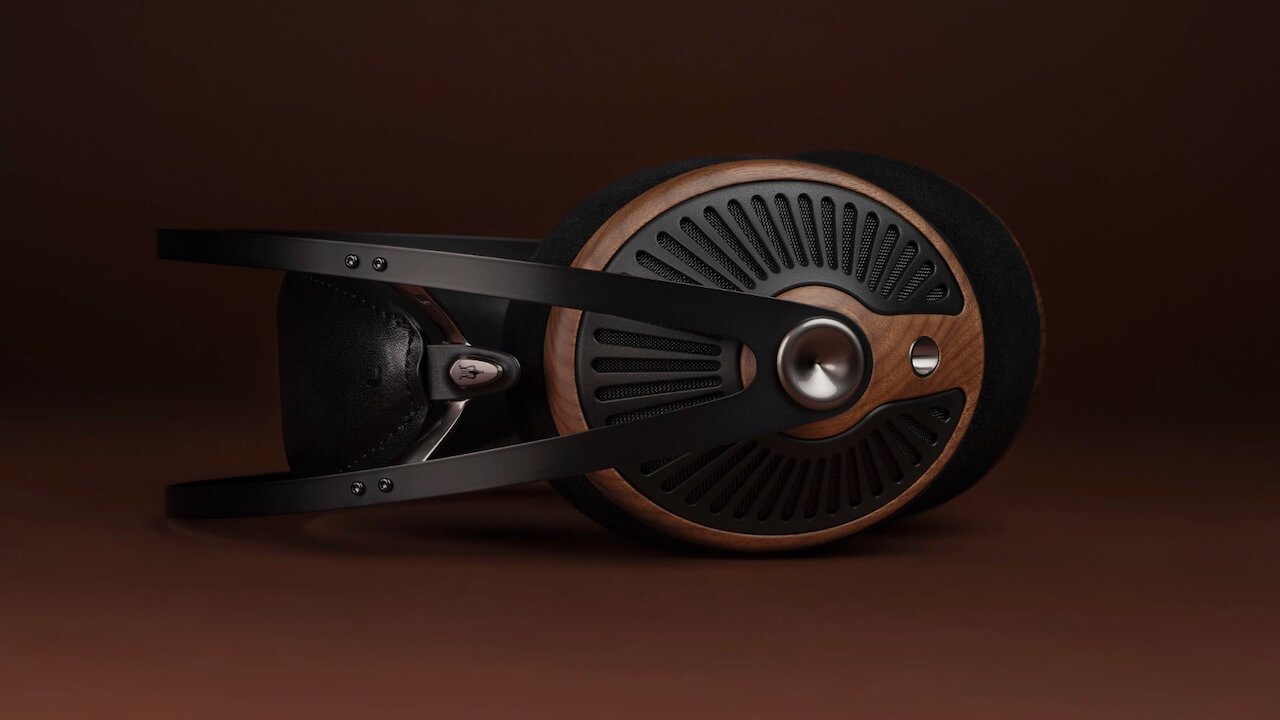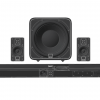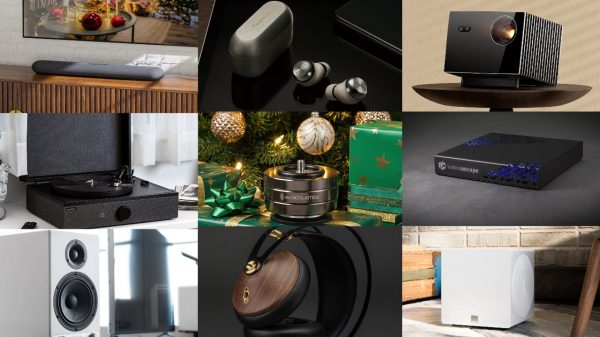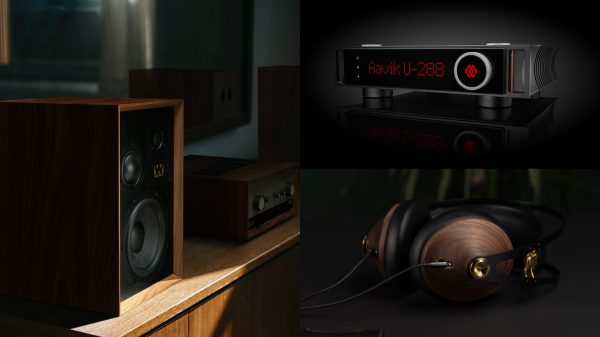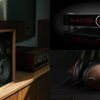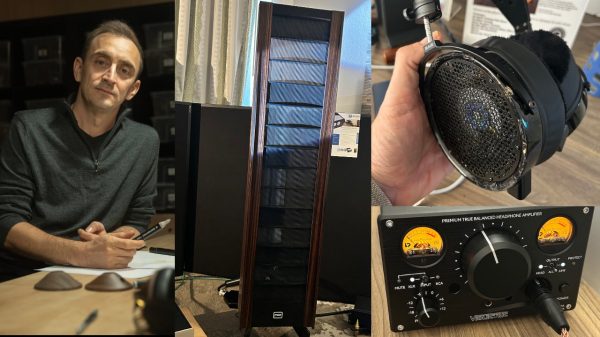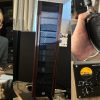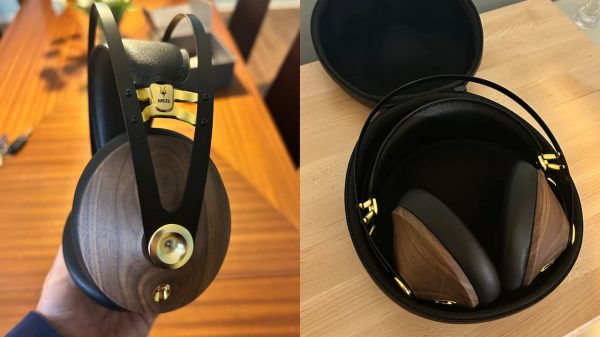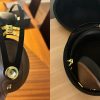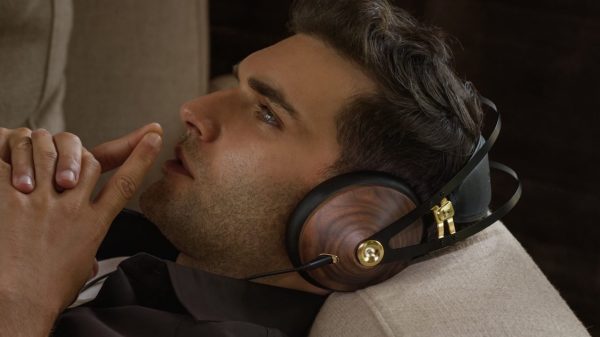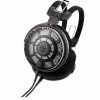Is it time for the Head-Fi revolution to pump the brakes? The pace of headphone innovation over the past decade has been nothing short of staggering—performance has surged to a level that would’ve seemed absurd ten years ago. Meanwhile, loudspeaker development has felt positively glacial by comparison. But at what cost? The pressure to stay in the spotlight, to be the next big headline at every CanJam stop on the map, seems to be pushing even top-tier brands to fast-track new releases.
The result? Products that sometimes feel not quite fully baked. Because let’s be honest: the bottom won’t fall out if you don’t drop 3–5 “game-changing” models a year. But if the gear starts to feel rushed? That’s when people start looking for alternatives.
I’ve been a Meze Audio customer—and an unapologetic cheerleader—for almost seven years now. That loyalty has shown up in both my writing and my wallet. I proudly own and regularly use the 99 Classics, 109 Pro, and Empyrean II. Antonio Meze and his team have built something special—one of the few brands in the headphone space that consistently blends design, comfort, and sonic performance in a way that feels genuinely elevated.
People stop me on the train, in airports, even at my local café and ask, “Who makes those stunning headphones?” The answer, always: Meze. From Baia Mare with pride.
That said, I can’t help but feel that the pressure to keep up with the breakneck pace of the Head-Fi market may be starting to creep in—even here. I’m good with the Poet, lukewarm on the 105 AER, and mostly positive about the 105 SILVA, but not without a few reservations. Meze isn’t alone in this. HiFiMAN, for example, has launched a firehose of new models—some outstanding, others that feel like they needed more time in the oven.
I know this might make Meze a little nervous as I kick off this review, but I say it out of respect and appreciation. The 99 Classics have been my daily drivers for nearly seven years. The 109 Pro are still some of the most engaging headphones I own. And the Empyrean II? That’s not just a flagship—that’s a turbocharged Bentley for your head—and it’s worth every cent they charge. It’s the kind of headphone that makes me seriously consider selling off a few loudspeakers and building a system around them that fully matches their state-of-the-art performance.
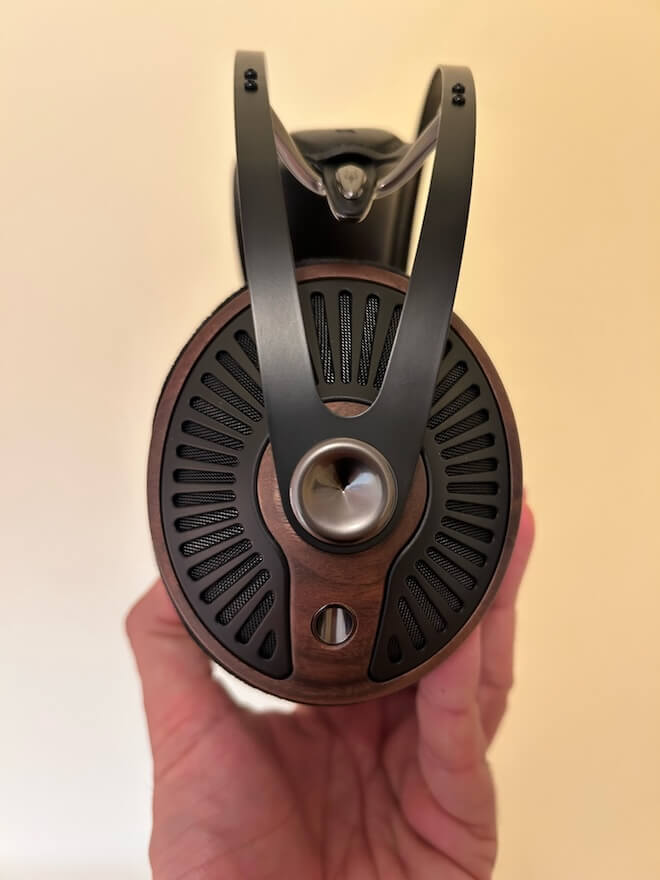
Mid-Century Modern Meets Eastern European Mojo
The Meze Audio 105 SILVA feels like the result of someone at Meze saying, “What if the 105 AER had a baby with the 109 PRO—and then we slipped it some titanium supplements?” It borrows cues from both, but stands on its own with a few smart refinements.
Those walnut earcups? Not just for show. They’re freshly milled, solid in the hand, and feel purpose-built rather than ornamental. The reinforced polymer frame isn’t some budget corner-cutting move either—it keeps the structure light but strong, without turning the whole thing into a gym-weight masquerading as a headphone.
Meze is sticking to its “build it like it belongs in a museum” design philosophy, and honestly, they’re making a solid case. This thing looks good—really good—and doesn’t feel like it was assembled by committee. There’s a kind of confidence here that says, “We’ll let the French and Danes argue over minimalism—meanwhile, we’re over here building actual beauty in Baia Mare.”
More importantly, the 105 SILVA doesn’t just sit there looking pretty. They made sure it sounds good too—a detail some other design-first brands occasionally forget. This one walks the line: form, meet function… and stay for the music.
The way the earpads meet the earcups on the 105 SILVA is classic Meze—seamless, precise, and built with intention. Like the rest of their lineup, the pads are fully removable and replaceable, and when you pop them back on, everything snaps into place like it was never touched. That level of detail isn’t accidental.
Antonio Meze is a cyclist and bike obsessive, and it shows in the design philosophy. He approaches headphones the way he’d approach a performance bike—examining how each part connects, how it can be refined, and how to make it last without compromising on speed, feel, or looks. It’s mechanical elegance with an audiophile mission.
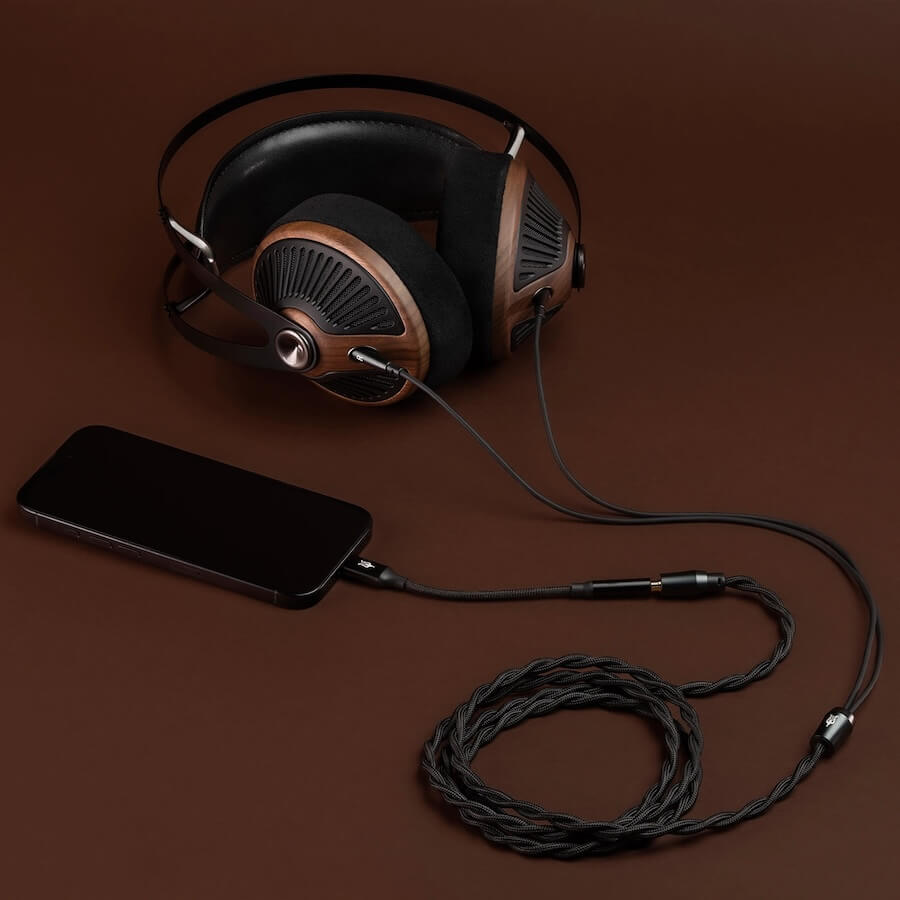
Design & Build: A Masterclass in Functional Elegance
Rooted in Mid-Century Modern design, the Meze 105 SILVA nails the balance between clean lines, functional form, and lasting materials. It doesn’t just look elegant—it feels engineered. The blend of natural walnut wood and modern materials gives it a timeless aesthetic that doesn’t shout for attention but earns it anyway. The radial grille melts beautifully into the earcup design, and like much of Meze’s work, it strikes that rare chord: vintage charm without nostalgia fatigue.
The frame is a mix of spring steel and PVD-coated cast zinc alloy hardware, and the result is a headphone that feels rock-solid without losing flexibility. You can twist and turn the SILVA a bit, and it doesn’t creak, groan, or give you any sense it’ll fail after a few years. It’s all buttoned up like it came off the design floor of a company that builds heirloom tools—not just pretty gear.
At the heart of it all is a 50mm driver with a W-shaped dome made from a carbon fiber-reinforced cellulose composite. It’s lightweight, rigid, and purpose-built to keep harmonic distortion in check. Meze surrounds the dome with a copper-zinc alloy stabilizer, which helps absorb unwanted vibrations and keeps the treble from veering into edgy territory. There’s some serious engineering under the surface here, even if it doesn’t scream “spec sheet stunner” on first glance.
Rounding things out is a new 1.8m OFC cable—dual-twisted, Kevlar-wrapped, with soft PVC-coated split wires and aluminum housings that feel more premium than most $500 headphones come with. It’s durable, tangle-resistant, and gives zero reason to upgrade unless you’re going fully balanced.
Also included in the box is a custom 3.5mm to USB-C adapter with a built-in DAC/AMP, which worked flawlessly with my iPhone 14—no setup hassles, just plug and play. Meze also throws in a 3.5 mm to 6.35 mm adapter for added flexibility.
In terms of industrial design, Meze has once again leapfrogged most of the category. This isn’t just a handsome headphone—it’s one of the most well-executed builds you’ll find at this price. Function, form, and long-term reliability wrapped up in one very slick package.

Easy to Drive, Built to Wear: Comfort and Compatibility Done Right
On paper, the Meze 105 SILVA lands right where you’d expect a well-engineered dynamic headphone to be: 50mm driver, 42 ohms impedance, 112 dB sensitivity at 1kHz, and a remarkably low <0.1% THD. Translation? It’s very easy to drive. I ran it through everything from portable dongle DACs to desktop amps, and it never once felt underpowered or like it needed special treatment. Even lower-tier headphone amps brought out plenty of dynamics and scale—while also revealing its one notable sonic weakness, which I’ll get into below.
At 354 grams, the SILVA sits right in the middle of the full-size headphone weight class—not featherweight, but nowhere near backbreaker territory. What makes it stand out, though, is how that weight disappears once it’s on your head.
I’ve got a pretty sizable melon, and lesser designs tend to clamp or create hotspots after an hour. Not here. The self-adjusting PU leather headband and well-placed suspension system distribute the load evenly, so you don’t feel like you’re being punished for your cranial real estate.
The velour pads deserve their own mention. They’re soft, breathable, and form a proper seal without cooking your ears—ideal for longer listening sessions. That seal also helps with bass response and overall coherence, keeping everything tight and focused without sounding closed-in. The dual 3.5mm TS connectors are standard fare for Meze, and they make swapping cables simple if you want to go balanced or try something fancier down the line.
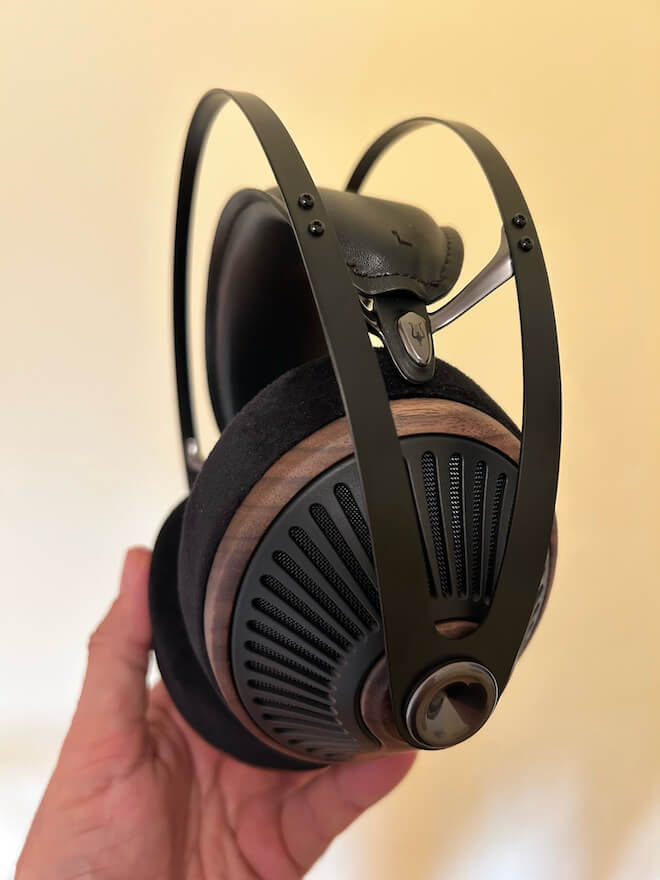
Listening
To get the most out of the 105 SILVA—based on my extensive time with the 109 PRO—I threw together a familiar rogues’ gallery of trusted gear. Dongle DACs included the iFi GO Bar Kensei, Questyle M15c, and the ever-persistent AudioQuest DragonFly Cobalt.
For streaming duty, the WiiM Ultra and Cambridge Audio CXN100 fed signal into a rotation of headphone amps: the Bryston BHA-1, Schiit Ragnarok 2, and the NITSCH x Schiit Magni Piety—each one revealing in its own way. I also pulled out the Thorens TD-160 Super with an Ortofon 2M Black into the E.A.T. phono preamp and piped it straight into the Bryston, because sometimes vinyl gets the truth out faster than digital ever could.
Craft Recordings has been laying waste to the competition in 2025 with their OJC and Bluesville reissue campaigns, and it made perfect sense to start with Looking Ahead—the Ken McIntyre/Eric Dolphy gem (read my review). It’s a must-own, no debate. Now, sure, it’s probably fair to say that most people dropping $499 on a pair of headphones aren’t likely to be running them off a $4,500 turntable front end with a $2,000+ headphone amp—but I am. And frankly, why the hell not? If you’re going to test the limits, you might as well see if they break before the needle hits the runout.
Right out of the gate, I had to dial the Bryston back—the high gain setting at low volume was already borderline excessive. The 105 SILVA aren’t shy when it comes to sensitivity, and that became clear fast. What also became clear? Where they shine—and where they don’t quite stick the landing.
The sub-bass is present, but it doesn’t hit with the same authority or rumble as the 99 Classics or 109 PRO. It’s tighter, more reserved—focused on coloring inside the lines rather than slapping the canvas with low-end drama. Even with plenty of power on tap and bass-forward tracks, these aren’t your go-to cans if you’re craving that gut punch.
That said, the mid-bass and upper bass are a different story—well-defined, with good texture and excellent tonal balance. There’s a clean handoff into the lower mids that gives bass instruments real body without smearing across the rest of the mix. It’s measured, deliberate, and clearly tuned with control in mind.
The 105 SILVA aren’t what I’d call neutral—and honestly, that works in their favor most of the time. From the bass through the midrange, there’s a subtle warmth and added texture that gives instruments more body and presence. Not flat, not clinical, but never bloated either.
Bass clarinet had excellent tone and pacing—Dolphy’s wizardry came through loud and clear, and McIntyre’s switch to flute on Side B felt properly placed and “present” in the soundstage. There were moments where the hi-res digital version on Qobuz felt a lot thinner by comparison, but that’s less a knock on the headphones and more a reminder of what you lose swapping a $4,500 analog front end and serious headphone amp for a phone and dongle DAC. The SILVA let that contrast be heard.
Two things stood out with both analog and digital playback—first, the lower midrange has a slight elevation, and second, that tilt gives male vocals noticeably more presence than their female counterparts. Sam Cooke, Nick Cave, Elvis, and even Billy Joel (whom I didn’t interrupt, unlike Bill Maher during that trainwreck of a podcast—seriously, let the man finish a sentence) all had clarity, texture, and a strong sense of depth.
In contrast, vocals from Amy Winehouse, Ella Fitzgerald, Brandi Carlile, and Lana Del Rey felt a touch recessed. There’s a dip between 1kHz and 2kHz in the upper mids, and while it doesn’t make things distant or too polite, I did find myself reaching for some EQ just to bring that range back into focus. It’s not a dealbreaker—but if you’re picky about vocal balance, you’ll definitely notice it.
The late Ms. Winehouse—who sadly won’t be making it to Rosh Hashanah dinner this year (despite the lure of my award-winning brisket, stuffed peppers, wild rice, and baked apples loaded with cinnamon)—came across a bit rougher than expected through both the Bryston/CXN100 and the WiiM Ultra streamer setups.
There was a noticeable edge starting in the lower treble—a bit of glare, a touch too much smoker’s rasp, and not quite enough of the soul and sultry warmth that defines her best recordings. It didn’t ruin the experience, but it definitely leaned more ashtray than after-hours jazz club.
Switching gears into electronic territory for a few nights, I fed the 105 SILVA a steady diet of Aphex Twin, Daft Punk, The Orb, Deadmau5, Kraftwerk, and Boards of Canada. What I learned: the SILVA’s open-back design delivers a relatively wide soundstage with a decent sense of depth—but let’s be clear, it’s not in the same league as the Empyrean II, and it doesn’t reach as far out as the 109 PRO either. The image does extend beyond the earcups, though, which prompted the wrath of my 19-year-old son.
He stormed in halfway through “Roygbiv” with the kind of disgust only a teenager can muster: “Why would anyone use headphones that everyone can hear?”—this from a kid who uses Audeze Maxwell for gaming and AirPods for music. Bless him. He might end up designing rockets for NASA, but clearly, I’ve failed him in the hi-fi department.
Bass impact was solid—controlled and punchy—but don’t expect subterranean rumble. Pacing was snappy; the 105 SILVA never lagged behind or got bogged down on rhythm-heavy tracks. Midrange was clean and well-textured, but the treble? A bit too analytical for my taste. Cymbals in jazz and rock had shimmer and presence, but there was a slightly exaggerated metallic sheen—plenty of energy, just not what I’d call natural. Think polished aluminum more than brushed bronze.
Dongle DACs had no trouble driving the 105 SILVA, but not all pairings were created equal. The DragonFly Cobalt in particular? Way too harsh—like former KGB interrogation room harsh. Sure, Svetlana might have looked like a Bond villain’s dream, but she was strapping on electrodes in places you’d really rather leave out of the conversation.
In contrast, the Questyle M15c and iFi GO Bar Kensei were a far better match. Both offered a slightly rolled-off treble and a noticeable lift in the upper midrange—right where the SILVA needs a little boost to feel fully fleshed out. Like a steaming bowl of borscht when it’s -30 outside in the Urals. Warm, balanced, and just the thing to bring a little humanity back to your face after the Cobalt’s cold stare.
Trying to figure out the 105 SILVA took more effort than I expected—especially considering how much time I’ve logged with Meze’s lineup over the past 7 years. This isn’t my first ride with their tuning philosophy, but the SILVA definitely threw a few curves.
One thing’s clear: Meze didn’t set out to build an affordable open-back dynamic to take on the LIRIC or the planar POET. That’s the wrong fight, and the wrong frame. What the 105 SILVA is—is a significant step up from the 99 Classics in clarity, resolution, and overall openness. But don’t expect the same smooth, laid-back treble of the 99—there’s a bit more edge here.
Tonally, it’s more in line with the 109 PRO, but not quite a match. The 109 still pulls ahead with a more balanced, linear response in the upper mids and treble, giving it an easier sense of refinement and ease up top. The SILVA is in the same family, but it’s the younger cousin with slightly less polish and a little more attitude.
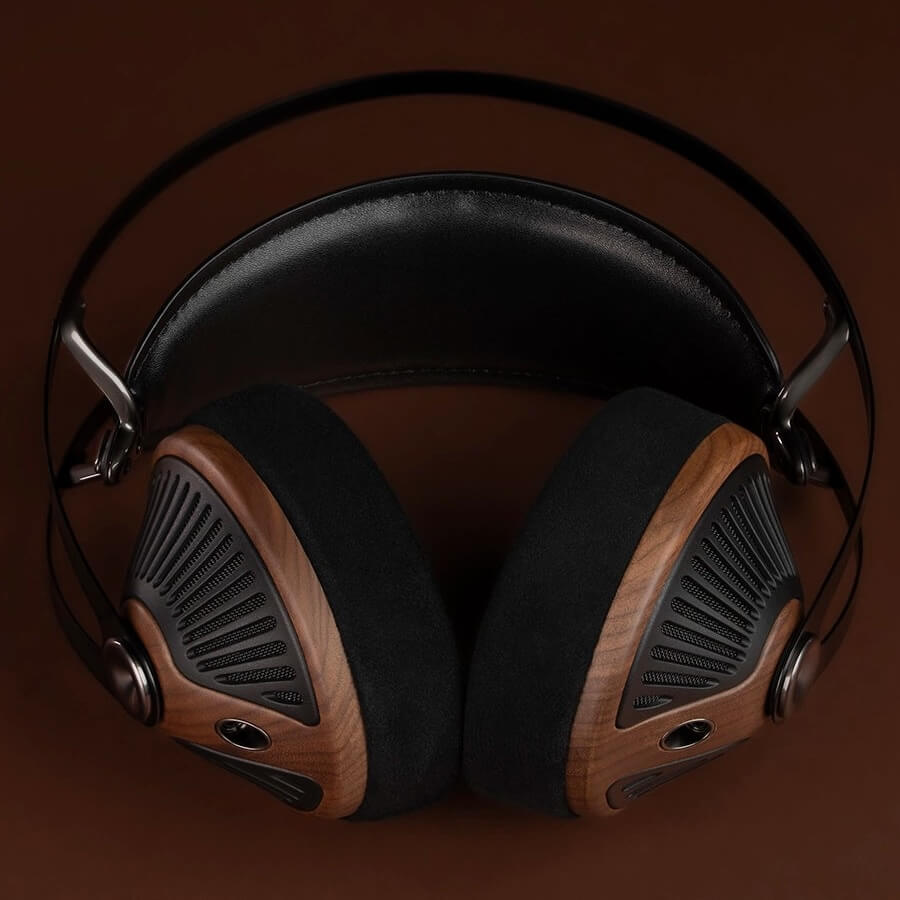
The Bottom Line
The Meze Audio 105 SILVA are a bit of an outlier—in the best way possible. Nobody in the sub-$600 open-back category is touching this level of industrial design, comfort, and build quality. If you told me these were $1,000? I’d hit you with a Paul Rudd eyebrow raise and keep sipping my espresso. Walnut wood cups, perfectly machined joints, plush velour pads, and that trademark Meze attention to fit and finish—all present and accounted for.
Sonically, they’re not aiming to dethrone the LIRIC or 109 PRO, and they’re definitely not a planar-killer—but they do offer a compelling balance of detail, clarity, and warmth if you match them with the right gear. The upper midrange and treble can get a little edgy, so this isn’t the place to throw a super-clinical DAC or amp at them and hope for the best.
The NITSCH x Schiit Magni Piety was easily my favorite pairing: just enough grip and low-end torque to keep things grounded, with the warmth and texture the SILVA needs up top to round off its sharpest corners. Dongle DACs are fine—just make sure they’re not hyper-revealing. Skip the shimmer. Focus on the flow.
Like every good Meze, these headphones excel at keeping you locked into the music once the synergy is dialed in. Focal, Sennheiser, and others have serious contenders in this bracket—but they don’t sound like this, and they sure as hell don’t look like this. Different flavors. Same fight. The 105 SILVA earns its seat at the table.
Where to buy:
Related Reading:
- Meze Audio Silva 105 Win Best Value at CanJam London 2025
- Meze Audio POET Headphones Review: The Right Blend Of Sound And Portability?
- Meze Audio Liric II Headphones: Review
- Meze Audio 109 Pro Open Back Headphones: From Romania With Love
- Meze Audio’s Empyrean II Headphones Aim To Exceed Some Enormous Expectations
- From Warsaw And Baia Mare With Love: How Eastern Europe’s Audio Scene Is Outsmarting The West

